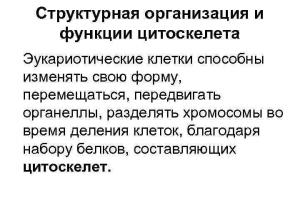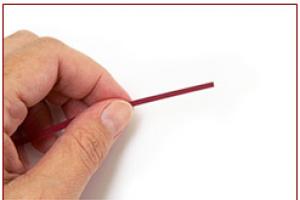Greetings! In articles about insulation, the use of penofol is constantly recommended, but I had a question, how to glue penofol to concrete, for example, if I am using a non-self-adhesive option? Thank you.
Hello. We will try to answer your question.
Penofol is an energy-saving material with a layered structure. It combines the properties of foamed polyethylene and thin aluminum foil. The material is characterized by lightness and low thickness, and therefore is often used on various objects (including balconies) for insulation, ensuring tightness, thermal, noise, vapor and waterproofing. However, to ensure high-quality protection, it is not enough to lean penofol against the insulated surface - you will need special glue for penofol.
Features of adhesive installation of penofol
Adhesive for foil foam foam allows you to quickly complete work on insulating surfaces. Besides, glue method installation is easy to implement and low-cost, since it does not require any special skills or specialized tools.
Usually, when choosing gluing as a method of installing insulating surfaces, you need to take into account the load-bearing capacity of the adhesive layer - but when using penofol, this fact will not be decisive, since the material is incredibly light.
Rules for preparing surfaces before gluing
Correctly selected penofol adhesive is not a guarantee of successful work. To ensure the integrity of the connection, the main thing is that the surfaces to be glued are prepared. All defects, chips, unevenness, cracks, as well as dust must be eliminated on them.
Important: Surfaces made of metal, concrete or wood can be additionally primed for better adhesion of the layers.
One of the most important conditions quality result - evenness and cleanliness of the surface. Thus, concrete floors and walls are leveled, cracks are eliminated, and metal elements are treated with an anti-corrosion coating.
What can be used as adhesive for penofol?
Penofol adhesive can be special or universal. For these purposes, professionals also allow the use of liquid nails, double-sided tape, thin layer polyurethane foam. The choice of the type of adhesive depends on both the purpose of the surface and its further design.
It is very important here that the characteristics of the adhesive composition correspond to the performance indicators of the insulation:
- ability to withstand operating temperatures in the range of +100…-60°C;
- permission for indoor use;
- biological non-toxicity;
- adhesion resistance.
If insulation is carried out outside, on the facade, then the adhesive composition must be resistant to water vapor and water. Non-toxicity requirements are also mandatory, since the balcony belongs to residential premises. Therefore, adhesive for foiled penofol must certainly have hygienic safety certificates.
How to properly glue penofol
To correctly glue penofol, you need the selected adhesive composition Apply to the side of the material that is not protected by foil. It is important to apply the glue in an even, thin layer so that all areas of the insulation are coated, without gaps.
When coating, special attention is given to the edges of the panel so that the penofol does not begin to peel off during operation. In order to fix the insulation, the material must be kept for 5-60 seconds so that the glue applied to it dries slightly. This will ensure better adhesion of the composition. Then the prepared canvas is pressed to the surface to be pasted, held and very carefully smoothed - until it is completely fixed.
If penofol is fixed in pieces with seams between them, then these same seams are additionally glued.
Still have questions? Ask them in the comments!
Polyethylene has long been popular in household material, unpretentious and inexpensive. Many people are faced with the need to glue polyethylene, for example, when arranging a greenhouse. It is worth noting that this material difficult to bond, but, nevertheless, this can be done using special adhesives.
So, to the question, what kind of glue will firmly glue polyethylene, experts answer - these are BF-2 and BF-4 adhesives, as well as ice acetic acid, xylene and trichlorethylene. You can purchase these compounds in specialized stores.
What glue to use to glue polyethylene
What glue to use for gluing polyethylene - composition
The easiest way is to purchase structural adhesive in the store, which contains methyl acrylate. Its properties ensure rapid softening of polyethylene and its further gluing. The glue also contains inorganic and organic acids and xylene, chromic anhydride and various additives.
The advantage of using the mixture is that no additional processing of the material is required. However, glue for polyethylene is quite toxic, so it is recommended to carry out work on outdoors. The glue acquires its best properties at a temperature of +35C; it is not afraid of moisture, but is flammable. It is better to buy it in specialized stores so as not to run into a fake.
If there is a need to combine polyethylene with polyethylene, it is more convenient and easier to resort to heat treatment.
This technique allows you to obtain a strong, unbreakable seam. Among the disadvantages of the method, it is worth noting the deformation of the edges of the product.
Mixtures for combining polymers are available for sale, with a consistency similar to a thick paste. An activator is included in the kit. After adding it to polyethylene glue, it acquires the necessary consistency and can be used for the near future.
Gluing polyethylene - step-by-step instructions
To glue polyethylene, you do not need special knowledge and skills. Even beginners can cope with the task at home.
The operating procedure is as follows:
- Clean the surface and degrease it. Some manufacturers claim that this step is not mandatory, but experts still recommend spending a few minutes and under no circumstances skipping it.
- Apply glue to the treated material. It will only take a few minutes for it to harden, so the parts need to be attached to each other without delay.
- Leave the glued polyethylene elements for several hours until the glue completely sets.
In general, this algorithm is similar to working with any glue. However, you should take care to use protective gloves, since the glue can cause allergic reactions and is quite toxic.
It is more convenient to apply the adhesive using glue gun, which can be charged with ready-made cartridges. The mixture of them is distributed evenly, so it is easy to achieve the desired dosage. If you are planning a large amount of work, this device worth the splurge.
VIDEO ON THE TOPIC
How to glue foamed polyethylene
Foamed polyethylene has a porous structure, therefore it provides high-quality heat, steam and waterproofing.
Due to its low price, ease of operation and installation, it is actively used in construction. The most popular brands are Izolon, Vilaterm, Energoflex, Polyfom, Temaflex.
If the need arises glue foam insulation, experts recommend two-component adhesives based on methyl acrylate. Such compositions are characterized by high adhesion and are suitable for working with polyvinyl chloride, polyethylene, and polypropylene. An example is the well-known adhesive composition “Easy-Mix PE-PP” from WEICON.
Typically, in order to achieve high results in gluing polyethylene foam, the following procedures are additionally required:
- surface treatment sandblasting or grinding
- physical treatment, for example, thermal fire,
- chemical treatment (usually the fluoridation method is used).
But when using “Easy-Mix PE-PP” you can do without additional preparation and treatment of surfaces due to the “primer” included in the composition, which changes the structure of the materials being glued, after which they easily adhere.
The use of “Easy-Mix PE-PP” adhesive for working with polyethylene foam both on an industrial scale and at home allows you to reliably and quickly fasten materials, while it is ready for use immediately after opening the package, it is easy to dose and mix, and apply.
The glue has a soft paste-like consistency, is not afraid of conditional “aging” and retains its properties for a long time even in open areas.
Polyethylene films are used for under-roof hydro and vapor barrier. During the installation process, it is often necessary to connect the pieces into one panel, but adhesive tape does not always help. The connection cannot be fixed with ordinary silicate glue or PVA. How to glue plastic film at home to get a reliable joint that does not allow moisture and steam to pass through? There are several effective and simple ways, which do not require complex equipment.
Problems when gluing polyethylene are a fairly common situation. It's all about the characteristics of the material. Once you understand them, you can easily avoid difficulties.
Heat sinteres two layers
What you need to remember from chemistry and physics
Polyethylene is the most common polymer in the world. Its extraordinary popularity is explained excellent properties material - impact resistance, ductility, low gas and water permeability. Films reinforced with mesh or fabric are used for roofing, which increases the strength of the material.
Despite the advantages, polyethylene films are very rarely glued together in industry. To understand why connecting parts is problematic, just remember your school chemistry lessons. The molecule of this polymer is a long chain of similar -CH2- units. The charges inside such a molecule are distributed evenly, it is non-polar. And the higher the polarity, the more suitable the polymer is for gluing.

This device is suitable for small parts
Connection methods without glue and solvent
The method of gluing with one’s own solution, which is common for many polymers, is also not suitable - in organic solvents polyethylene is practically insoluble. The answer to the question: how to glue polyethylene film is actually very simple: it is best to use welding.
Of the many methods for welding polyethylene film, two are worth highlighting:
- Welding with a heated object.
- Open flame welding.
Both methods are equally effective, but in non-industrial conditions it is still easier and safer to use the first. However, everyone can choose the most suitable option for themselves, taking into account the availability necessary tools and your own skills. In any case, these methods make it possible to firmly connect parts together, creating reliable building elements, agricultural and protective structures.

When laying film on the roof, you can do without soldering
Preparatory stages for work
Popular wisdom says: “Measure seven times, cut once.” And before starting to work with polyethylene, you need to not only carefully take measurements, but also think through every detail. First of all, answer the questions:
- What loads will the finished structure be subject to?
- What is its expected lifespan?
- Do you need 100% hydro resistance?

Maybe after such questions the need to glue together many parts will disappear. For example, to insulate transported goods or preserve equipment, some parts of the plastic film can be secured with metal staples or twine. And for protection building structure to protect against moisture, it is recommended to overlap the polymer, covering individual parts.
But when the question arises about how to glue reinforced film for a greenhouse, you should not neglect reliability. After all, such a design, as a rule, should serve for a long time, perfectly protecting plants from all kinds of weather surprises. Connection using staples and strong ropes in this case it will not work, and welding (any of its proposed types) will ideal option.
Hot Welding Instructions
This method can be called the simplest, most effective and safe at the same time, especially when it comes to welding at home. An ordinary iron can be found in every home, and seams created using heated objects are usually the smoothest and neatest.

Universal roller for gluing polyethylene
Most convenient tool For this method, a roller with a built-in electric heating device can serve. This tool is ideal in cases where a large amount of work needs to be done - for example, in large agro-industrial enterprises. As a rule, such devices have to be made independently. And for them to work well, you must at least have a qualification as an electrician.
However, when it comes to how to glue plastic film for a greenhouse at home, the roller method is not very suitable. After all, not everyone has the time, patience and necessary skills to create such a device, especially when the need for welding rarely arises. Then you should resort to the help of improvised means. And in everyday life there are a lot of devices that can be heated to the required temperature – approximately 250°C.

How to work with an electric iron and analogues
To glue polyethylene using an iron, you just need to lay the edges of the material on a wooden strip, and then iron the parts through a newspaper or fluoroplastic film folded in half. By the way, these same safety elements will not be superfluous when gluing with other hot objects. Depending on the area of the surface to be joined, you can use a narrow edge, spout or flat iron. A wooden slats will help create an even and neat connection.
To what temperature should the iron be heated? Unfortunately, there are no clear recommendations on this issue, and 250°C is rather a relative indicator. The melting point depends primarily on the brand of polyethylene. Therefore, you need to be very careful while working. If the material does not connect and does not change at all, it means that the iron needs to be heated more strongly. If the seam is barely noticeable, and the film near it has lost its strength, the temperature is already too high.
There is always a risk of burning through the film. To avoid this, you need to reduce the contact between the iron and the parts being glued to one second. To prevent polyethylene from sticking to the iron, instead of newspaper, you can cover the surface of the polymer with thin cellophane before work. To check how effective polyethylene soldering is, you need to pull the connected parts in different directions. If the seam comes apart, the process will have to start again.

Soldering iron with a special nozzle
If the iron method is not suitable for some reason, you can use other tools. For example, a hot knife and a soldering iron tip will make it possible to create smooth and thin seam lines. Some craftsmen manage to connect polyethylene parts with a hot needle. However, you can use other available means. Auxiliary tools are the same as for joining with an iron - wooden frame, newspaper or cellophane.

Homemade soldering iron for gluing polyethylene
Open flame welding of film
You will need:
- one of the possible devices with an open fire: gas-burner, alcohol lamp, blowtorch, match, torch;
- bars made of ceramic or metal.
First, the edges of the film are fixed with bars so that a narrow strip of polyethylene several millimeters thick is visible at the welding site. The bars should be made of metal or ceramics, but in no case from wood - after all, their function is not only to keep the polyethylene immobile, but also to remove some of the heat so that the parts being connected do not burn out.
After this, with the tool selected for welding, you need to draw a conditional line along the edge of the polyethylene parts. As a result, a dense connecting bead should form at the point where the films come into contact with the open fire. In order for the welding process to be successful, it is advisable to first, experimentally, select the optimal speed of the tool. It depends on the device used and on the brand of polyethylene.

It is better to use the device on the roof
Is it possible to glue the film with glue?
Some craftsmen tried to use BF-4 or BF-2 to glue plastic film at home. After treating the parts with a 25% solution of chromic anhydride, they applied glue to the surface, but subsequently the seams plastic film I still had to handle it with an iron heated to 50-60 °C. As a result, this method differed little from joining with hot objects, even if the temperature was much lower.
Using super glue: a cutting-edge approach
The surface roughness contributes to the successful joining of parts with glue. But the properties of the polymer in question are opposite - it is characterized by ideal smoothness. And yet, how to glue plastic film for a greenhouse using only one of the ordinary factory adhesives? Until recently it was thought that this was impossible.

However, recently varieties of superglues specifically designed for working with polyethylene film have appeared on the market. Among the advantages of such products:
- no odor;
- water resistance;
- elasticity;
- strength of connections.
When dry, they can be diluted with acetone. However, they must be used with caution, avoid contact with skin and household surfaces, because they contain strong solvents.
Also worthy of attention are products based on ethyl 2-cyanoacrylate, which were developed by chemist Harry Coover during military experiments in the United States back in the middle of the last century. These types of glue are available today thanks to mass production, create fairly strong connections, and are also suitable for working with rubber and metal.
Is the choice of adhesive for joining parts justified?
Is it worth using glue for polyethylene at home, including for roofing works? One of the main problems when used in everyday life can be its toxicity. In addition, not all products on the market are of sufficient quality. And it is simply impossible to check the effectiveness of glue upon purchase. At the same time, when using one of the types of welding, there is a greater chance of getting an excellent result.

Using glue for polyethylene
As you can see, there are many ways to glue plastic film at home, and everyone can choose the most suitable one for themselves. In addition, there is always the opportunity to turn to professionals who will not only give useful advice, but can also provide practical assistance.
Owners often encounter this problem. summer cottages, greenhouses, home craftsmen, and even car owners. After failures, people start looking for information on the topic. Is it even possible to glue polyethylene? In the article you will find the answer to this question.
Polyethylene and its properties
Polyethylene is a very common material with many excellent properties. It is used for insulation, for packaging, for protection against moisture, is an excellent electrical insulator, and absorbs the most dangerous look radiation - neutrons and therefore used in protection against them, it is completely chemically resistant. This latter sometimes turns from an advantage into a disadvantage. How to glue polyethylene? Gluing is a chemical and a little electrical process, oddly enough. The molecules of the substances being glued are attracted to each other due to the difference in their electrical charges.
That is, there must be an adhesive in nature (and on the market) that adheres well to polyethylene, and when hardened, firmly holds the glued parts. So, the problem is that gluing polyethylene is very difficult. Its molecules are electrically very “balanced”, hence the extraordinary chemical resistance of the material. And a reluctance to stick to anything. However, the industry has found something to glue polyethylene with. True, not all of this is suitable for home, but some may come in handy. Here suitable methods, selected by resulting strength rating:
- Welding polyethylene
- Weicon Easy-Mix PE-PP Adhesive
- Epoxy glue plus oxidizing agent
Welding polyethylene
The strongest seam is obtained when welding polyethylene. If done correctly. The fact is that polyethylene is hot-molded, usually under very high pressure, which reaches hundreds of kilograms per square centimeter. And when it is reheated at atmospheric pressure until it melts, it tends to shrink, a little, but this is enough to make welding difficult. Two types of welding can be distinguished: film welding and thick polyethylene welding (canisters, pipes, etc.)
To weld the film, heated objects or a special apparatus for gluing polyethylene, or more precisely, welding, are used. It works like this: both layers of film are pulled along a heated wedge, and then immediately welded with a pair of compressed rollers. At correct selection temperature and pressure of the rollers, an excellent result is obtained - complete sealing of the seam.

But with a little practice, you can learn how to glue polyethylene even with an electric soldering iron or iron through paper, so as not to spoil its sole. The clean edges of the film are placed on top of each other and driven through the paper with the edge of the sole of a heated iron.
A soldering iron with a clean tip, if turned on through the voltage regulator, welds the seam even better, and no paper is needed. You can also make a clamp on the tip with a small nozzle of a convenient shape made of metal. Then the tip can be used for its intended purpose, and the polyethylene will not be stained with solder or carbon deposits from flux.
Gluing thick polyethylene is more difficult and requires good skill. Most The best way heating: portable gas burner (easy to use), or hair dryer with a nozzle for a narrow jet of +250°C.

The procedure could be as follows:
- Thoroughly clean and dry surfaces before welding.
- Prepare polyethylene filler for the seam. It is best to take a narrow piece of the same material.
- Heat the edges of the seam until melting begins and let them “settle” a little. But don't get carried away with this process.
- Start introducing the additive (see point 2), fusing it evenly into both sides of the seam to a thickness equal to the material.
- Allow the seam to cool completely.
The same method is applicable when deciding what to use for gluing foamed polyethylene. The surface of foamed polyethylene is not very conducive to bonding, and it is better to weld it carefully.
For another method of welding thick polyethylene, see the video:
Gluing with acrylate glue with filler
The best glue is Weicon Easy-Mix PE-PP. It is specially designed for materials with weak adhesion. Most liquids “stick” to polyethylene very poorly and are simply squeezed out from the point of contact between the surfaces.
![]()
But this glue contains the addition of tiny glass beads, which prevents the glue from leaving the gluing area, forming a gap required thickness. Therefore, the gluing surface is sufficient and the glue, when hardened, holds the surfaces firmly together. It’s hard to find anything better than gluing polyethylene.
Surfaces must be thoroughly degreased and dried before gluing. Glue can only be supplied from a branded packaging mixer. Best Temperature to perform work +21...+23 °C. Liquid glue is good for no more than 2-3 minutes. After applying the layer, you must immediately join the surfaces. Full readiness of the seam (maximum mechanical strength) for polyethylene will be achieved in a few hours (4-5 according to the experience of those who worked with glue). The curing of the adhesive joint is carried out at a temperature from +15 to +70 degrees.
Bonding with epoxy glue
This is the most accessible method, if we talk specifically about gluing and not welding. Before gluing polyethylene, you need to prepare the surfaces.

Epoxy glue is not a glue for gluing polyethylene, but, nevertheless, phenol-formaldehyde resin has very decent adhesion to the surface of polyethylene. In this case, you need to act like this:
- Roughen surfaces emery cloth and then degrease and dry.
- Treat both surfaces with a 15-25% solution of chromic anhydride or 20-30% potassium dichromate. (Caution, caustic substances and dangerous carcinogens!) You can take another strong oxidizing agent: a strong solution of potassium permanganate. It is not much less effective, but is much safer. After treatment, dry the surfaces again.
- Prepare epoxy glue according to instructions.
- Apply a thin layer of glue to both surfaces and join.
- Maintain at a temperature of +30...+45°C for several hours, but it is better to keep for a day until ready.
Conclusion
In case of high strength requirements, welding should definitely be preferred. If welding is also accompanied by keeping the seam warm at about seventy degrees for several hours with slow cooling, then the seam will have a slight fragility. Rapid cooling of the seam makes it brittle, especially in cold conditions.
Acrylate adhesive with filler does not require mechanical preparation of the surface, except for unconditional cleaning and degreasing, which must always be done before gluing. You can even try to experiment with other acrylate adhesives by adding an additive in the form of crushed chalk or cement. It is possible that you will be able to get a high-quality and very inexpensive recipe.
Epoxy glue is the most difficult to use, and the strength here is not the highest. But in as a last resort, and this may be the way out.
Polyethylene film is used in construction for the most part as a waterproofing or heat insulator when it comes to film greenhouses. Polyethylene has certain soundproofing properties, but not sufficient to use it as an independent sound insulator.
To glue polyethylene, you must first purchase the kind of glue that is used for gluing plastic.
Is it possible to glue polyethylene?
When constructing waterproofing or a greenhouse, it is often necessary to glue several pieces of polyethylene together to form a film the right size. But how to glue plastic film, and is it possible to do it at home?
The question is not as simple as it initially seems. It is also known from a school chemistry course: the higher the polarity of a polymer material, the better it is amenable to gluing. The polyethylene molecule written in chemical symbols is very similar to a long chain consisting of identical units - CH2-. This uniformity suggests that electric charges inside the polyethylene molecules are distributed evenly, i.e. it is non-polar. Therefore, polyethylene sticks very poorly.

Welding a polymer film: a - using an electric soldering iron; b - using an electric iron attachment; c - open flame.
Very often, adhesive mixtures are used for gluing polymer materials, which are prepared from the same materials (or similar ones) dissolved in a suitable solvent. But this will not work with polyethylene - it is practically insoluble in organic solvents.
Some polymers can be glued simply because they have a rough surface. In this case, the adhesive solution fills the irregularities and, when hardened, clings to them, tightly gluing the pieces of material together. But this cannot be done with polyethylene, since it has a perfectly smooth surface.
Therefore, if we talk specifically about the gluing process, then gluing plastic film at home is almost impossible. And in industrial applications it has never been glued together until now.
But although pieces of polyethylene cannot be glued together, they can be welded, or, more precisely, soldered, which has been successfully done for many years in the industry, having developed many methods for such welding. But out of this many methods, there are only two that can be used at home.
Return to contents
Welding polyethylene with a hot object

Welding the film using an electric soldering iron: a - type of seam; b - device of an electric soldering iron for welding the film.
It is most convenient to do this operation using a metal roller with a heating device inside. But to make such a device at home, you need to have a fairly highly qualified electrician.
Therefore, people's ingenuity found a completely satisfactory replacement for such a tool - an ordinary iron. Since polyethylene film of different brands melts when different temperatures, then there are no specific recommendations for temperature conditions welding cannot be done.
The heating temperature of the iron for welding will have to be determined through trial and error. If the temperature of the iron turns out to be insufficient, the film will not cook, but if the iron is heated too much, the seam will be “overcooked”, weak, and the film on the sides of the seam will tear easily. The only thing that can be recommended initially is that the iron should not be too hot.
The soldering technology itself is very simple. To make the seam neat and even, it is better to solder on a flat surface. wooden surface. The edges of the film should be placed on this surface with a slight overlap on each other (0.5-1 cm). You need to run the tip or edge of a heated iron along this overlap. The passage should be no more than a second in one place, otherwise you will burn the film.

PVC film can be recognized by the yellowish tint of the edge of the roll.
But with this method of soldering there is one very important negative point: the heated plastic film very often sticks to the iron. To prevent this from happening, it is better to cover the polyethylene seam before soldering. thin sheet cellophane, and then go over it with an iron.
The strength of the solder can be checked by simply pulling the soldered pieces in different directions. If the seam diverges, it means the quality of the soldering is unsatisfactory, and you need to repeat everything from the very beginning. Some craftsmen perform this soldering not with an iron, but with a hot knife blade, claiming that it is more convenient for them. But this is a matter of taste.
Return to contents
Open flame welding of polyethylene
To verify polyethylene using this method you will need:
- metal or ceramic bars;
- welding tool (this can be a gas torch, a blowtorch, an alcohol lamp, and in the absence of these, you can use a splinter or even ordinary matches).

Electric circuit diagram connecting the iron to the network: 1 - constant wirewound resistor; 2 — metal body; 3 — sting-ridge; 4 — textolite handle; 5 - stand.
The edges of the films to be welded must be fixed with metal or ceramic bars (wooden ones are not suitable for these purposes). They need to be fixed in such a way that at the welding site a narrow strip of film (3-5 mm, no more) is visible from under them. The bars are needed not only for fixing the film, but mainly in order to quickly remove heat from the films being welded, otherwise they will burn out entirely instead of fusing.
Next you need to run the flame along the remaining open edge. The speed of flame movement will also have to be selected experimentally, especially since it will be different not only for each brand of polyethylene, but also for each tool. If the operation is performed correctly, then upon completion a dense roller will be formed, firmly connecting the two edges of the plastic film.
As an alternative to welding, when constructing greenhouses and greenhouses, two pieces of plastic film can be sewn together. To do this, two pieces of film are overlapped on top of each other. The overlap should be 2-2.5 cm. Then a regular medical plaster is glued to the overlap on both sides. It won’t stick well, but that’s not a big deal, the main thing is that the strips of adhesive lie exactly where they overlap, one above the other.
Then, overlapping, two seams are made with large stitches. In this case, pieces of film are held together using stitched threads, and the patch, having a stronger material structure, prevents the threads from tearing the polyethylene. However, this method is not suitable for waterproofing, since the seams will allow moisture to pass through.
It should be noted that both welding methods are only suitable if you need to connect polyethylene to polyethylene.
If there is a need to glue the film to some other material, then you will have to look for a transparent film made of another material, which adheres better, and for which there are commercially available for working with special adhesives. Alternatively, it could be polyvinyl chloride film.
It’s up to you to connect plastic film using the methods described or look for something new. The main thing is not to be afraid to experiment, because if something cannot be done today, this does not mean at all that it cannot be done tomorrow or the day after tomorrow.








